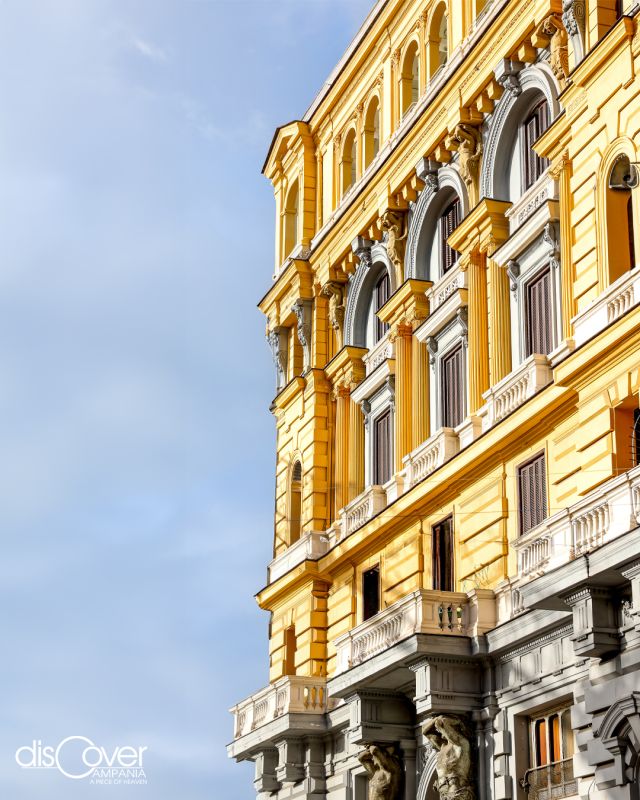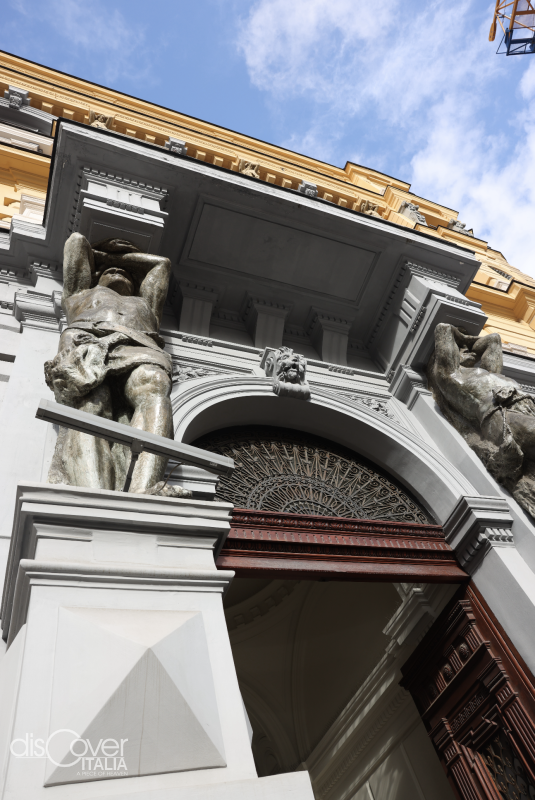In that year 1884 the city was experiencing one of its darkest historical periods. The violent cholera epidemic that had hit much of the peninsula had hit the city hard, resulting in almost eight thousand deaths.
 A sad record, linked to the terrible hygienic conditions in particular in the historic city centre, which in those years had experienced a demographic explosion, in the face of an absolutely insufficient and inadequate housing stock to accommodate so many residents. The health crisis had highlighted the lack of sewage systems, the lack of departments dedicated to the treatment of infectious diseases in hospitals and, above all, the unliveability of the overcrowded "lower areas" in the central neighborhoods, where the majority of the population was concentrated.
A sad record, linked to the terrible hygienic conditions in particular in the historic city centre, which in those years had experienced a demographic explosion, in the face of an absolutely insufficient and inadequate housing stock to accommodate so many residents. The health crisis had highlighted the lack of sewage systems, the lack of departments dedicated to the treatment of infectious diseases in hospitals and, above all, the unliveability of the overcrowded "lower areas" in the central neighborhoods, where the majority of the population was concentrated.
Addressing the emergency in the front row, as mayor of the city elected the previous year, was Nicola Amore, former deputy of the Kingdom in various legislatures, head of the Police of the Ricasoli government, magistrate and renowned criminal lawyer. Since his inauguration, he had dedicated himself to providing Naples with sewerage and other essential services to improve its liveability. A program that the health crisis made even more urgent, as clearly emerged on the occasion of the visit of King Umberto I, accompanied by the then Prime Minister Agostino Depretis, who Amore led to visit the unhealthy historic centre, for which the journalist and writer Matilde Serao had coined the definition of "belly of Naples", the title of her new novel published in that difficult year.
Due to his efforts in the emergency, on 26 November 1884 Amore returned to sit in Parliament as a senator. A role which, with his long parliamentary experience, was decisive for the approval in 1885 of the so-called "special law for Naples", thanks to which the mayor was able to start the recovery phase, carried out for the entire duration of his office, despite obstacles and difficulties.
 Among the salient works of the Redevelopment, there was the demolition of large parts of the least healthy and most crowded neighborhoods: Porto, Pendino, Vicaria and Mercato. A true urban revolution, which also sacrificed valuable historic buildings to gain space for wider streets and new buildings. It was then that Piazza Bovio was connected to the Piazza Garibaldi station with the creation of the new Corso Umberto I, which the Neapolitans renamed Rettifilo.
Among the salient works of the Redevelopment, there was the demolition of large parts of the least healthy and most crowded neighborhoods: Porto, Pendino, Vicaria and Mercato. A true urban revolution, which also sacrificed valuable historic buildings to gain space for wider streets and new buildings. It was then that Piazza Bovio was connected to the Piazza Garibaldi station with the creation of the new Corso Umberto I, which the Neapolitans renamed Rettifilo.
Along Corso Umberto, at the intersection with Via Duomo, one of the cornerstones of the ancient city, extended right from the Risanamento to the sea, the pre-existing Piazza della Sellaria was enlarged and completely redone. On that occasion the Sellaria fountain was moved to the small square of the Great Archive, where it still is today. The new square, much larger, was characterized by the presence of four, imposing twin buildings, in neo-Renaissance style, each featuring, on the sides of the entrance, two pairs of mighty Telamons. Due to these characteristics, the square was immediately identified by the Neapolitans as the "Four Palaces".
Officially, the first dedication, decided in 1891, was Piazza Agostino Depretis. In the meantime, after being defeated in the 1889 elections, Amore had retired, deeply disappointed, to private life. He died in 1994 and a very central city street was dedicated to him. But in 1904, the Municipality decided to exchange names, attributing that of Nicola Amore to the square and that of Agostino Depretis to the street already dedicated to the mayor. On this occasion, a marble statue of Nicola Amore by the sculptor Francesco Jerace was inaugurated in the centre of the square. The statue was moved in 1938 to Piazza Vittoria, where it is today, to avoid hindering the naval parade organized for Hitler's visit on 5 May.
The square, which hosts the "Duomo" station of the metro line 1 designed by the architect Massimiliano Fuksas, is still affected by the works for the construction of the central structure which will enhance the important archaeological finds.
The archaeological site: the sanctuary of the Isolympic Games
Since the works at the end of the 19th century, unequivocal evidence had emerged of the presence of important Greco-Roman remains on the site of the new square of the four palaces. The excavation for the underground confirmed and expanded the nineteenth-century evidence, reconstructing the ancient history of the place and returning very valuable finds.
The oldest remains are of a building from the 4th-3rd century BC. and a contemporary road. Parts of the portico and numerous architectural elements of the Gymnasium, where sporting and artistic competitions were held, can be dated to the 2nd century BC. The remains of a ritual area and a drain with numerous votive objects were also found.
It was the year 2 AD. when, by will of Emperor Augustus, Naples hosted the first edition of the "Italikà Romaia Sebastà Isolympia", commonly referred to as "Sebastà". The choice of the city was linked to its profound Greek culture, which remained intact, including the use of the language, even in Roman times. As the name explained, these were games inspired by those of Olympia, with the addition of numerous sporting competitions, including artistic, music, theater and poetry competitions. They took place every five years for five days, between the end of July and the beginning of August. Participants came from all over the Mediterranean. The winners won crowns of ears of wheat and cash prizes, which were larger for the participants in the artistic competitions. The emperor followed them personally until the year 14, a few days before his death.
The temple is dedicated to Augustus. The remains re-emerged from the works in the square, where the races ended. Of great importance was the discovery of marble slabs with all the names, written in Greek, of the winners of the various competitions of the Games, divided by categories and disciplines.
The stratification of the different eras has also revealed parts of a marble fountain from the 1100s. The finds discovered during the excavations in the square are exhibited in the space of the Neapolis Station of the National Archaeological Museum of Naples.




Comments powered by CComment